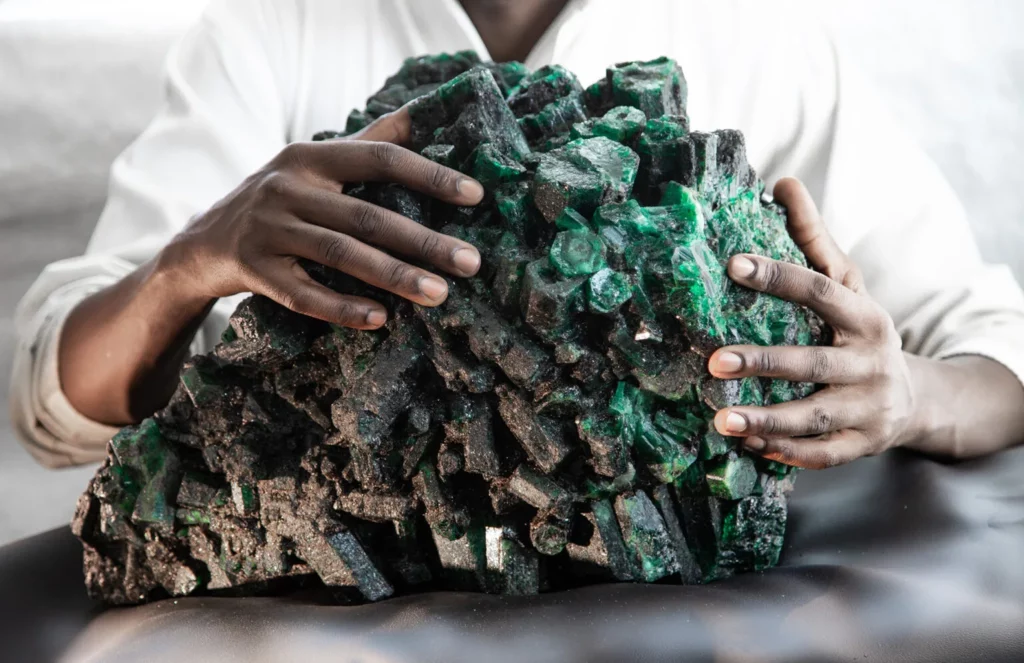News
News
2022, November 2

The Kafubu Cluster, our gentle giant, is a testament to the high-quality gemstones that can be produced when Mother Nature allows time for the various crystals to form deep within the Earth’s crust. Gemfields’ geologists describe the formation process of emeralds as an incredibly rare coming together of uncommon elements in unusual circumstances.
A precise set of remarkable geological and geochemical conditions is required for the formation of these brilliant green gems. Beryllium, essential for the crystallisation of beryl, is one of the most elusive elements in the Earth’s crust (estimated to be about 2 parts per million) and must be carried up to the surface by pegmatites, which, in turn, must come into contact with chromium and vanadium-bearing (ultramafic) rocks in order to attain the desired colour. Not all pegmatites are beryllium-bearing and even fewer are emplaced within rocks that contain adequate chromium. These factors – coupled with even more specific temperature, pressure and fluid content requirements for its formation – makes emerald extremely rare and remarkably erratic in its distribution.
Zambian emeralds tend to have a higher iron content than emeralds from other origins, which means they are less fragile. High iron content also means fewer surface-reaching fractures and less need for treatments and enhancements. The careful process of recovering emeralds by hand at the Kagem emerald mine has enabled the safe recovery of some of the largest and most exceptional emeralds ever found, of which the Kafubu Cluster is an extraordinary example.
Source: Gemfields
Be First to know about new activities and more
©2025 G-ID Laboratories - All Rights Reserved.
